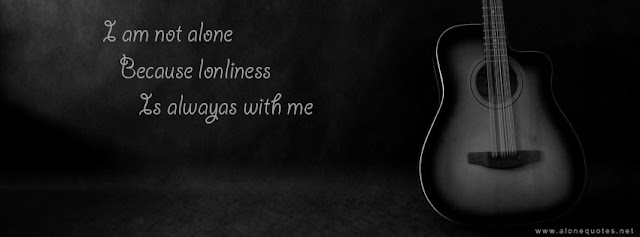Sad Boy Walpaper Biography
Source (Google.com.pk)Dickens fans ought to be feeling grateful to H. G. Wells right now. Why? Because if the Time Machine author hadn’t been such a rampant old goat, he – rather than the mighty Victorian novelist – might well have been the subject of Claire Tomalin’s latest, much celebrated work.“I spent a lot of time thinking about doing a biography of H G Wells, whose young life is absolutely wonderful,” she says. “He’s just the sort of person I like: he came out of dire poverty and became great entirely through his own effort; he was a writer of genius when he was young.“But then his life dwindles into far too many love affairs. I have a sort of ‘biographer’s rule’ that people who have too many love affairs really don’t make good biographical subjects, because they become so boring and monotonous.”Really? Aren’t they racy and exciting? “Well they aren’t, you see. One or two perhaps, but when they go on and on and on, you just feel like yawning.”Instead, Tomalin has turned her attentions to the behemoth of Victorian literature, Charles Dickens, who she explored indirectly once before - via his secret 18-year-old mistress, Nelly Ternan - in her bestselling 1990 biography The Invisible Woman.Revisiting the great man following the publication of his many letters has been quite an undertaking, but the result - Charles Dickens, A Life - looks set to become as revered as every other Tomalin biography: over the years, she has written to great acclaim about the likes of Jane Austen, Samuel Pepys and Thomas Hardy.Yet Tomalin’s own life is arguably every bit as interesting as that of her subjects.Born in 1933, Tomalin had a difficult childhood; her mother and French father were often at loggerheads, and separated when she was 7. She sought solace in books, and had devoured the complete works of Shakespeare by the age of 12. It was of little surprise, then, that the fiercely bright schoolgirl won a place at Cambridge, coming to Newnham when she’d just turned 18.“They were years of turmoil,” she admits. “There were 10 men to every woman in those days, so you’d get involved in love affairs, and the difficulty of combining love affairs with work was considerable!“But of course it was an overwhelming experience. It formed my life.”Did she know at the time that she would be a writer? “No, I thought I was a poet. I published quite a lot of poetry in magazines, but when I finished at Cambridge, I realised that I didn’t have an individual voice as a poet, and that’s the one thing that matters. So I gave up.”Nevertheless, her poetry caught the eye of a young student who came to Cambridge four years later: the novelist and playwright Michael Frayn.“He had read some of my poetry and thought I had an amazingly romantic name – my maiden name was Claire Delavenay; he thought ‘ah, a girl called Claire Delavenay’,” she chuckles. Frayn is now her husband.Yet the pair didn’t meet at Cambridge; shortly after graduating (with a first, naturally) she married fellow student Nick Tomalin. He went into journalism, she into publishing – and then she became pregnant.Having always been on a par with her male contemporaries at Cambridge, becoming suddenly tied to the kitchen sink felt rather alien to Tomalin: “It was a shock to young women I think; when you seem to have been on absolutely equal terms, and then you have a baby, and then another baby… You don’t really realise what you’re in for, and it must be said, you’re in for life! Children never stop tugging at your heart, if not at your help.”But unlike many other young mothers, Tomalin sought work: “It never crossed my mind that I wouldn’t. So when I was having babies I read for publishers, and then I began doing some reviewing. Then that lead on to becoming deputy literary editor at the New Statesman, and so it went on.”By this time, Tomalin had had four children, one of whom died when he was just a month old. But when her fifth child was born with spina bifida, she decided to stay at home - and writing a biography seemed a natural thing to do.“I’m really a historian; what I really wanted to read at Cambridge was history, but for various reasons I didn’t. I read English, which was great fun; you just do all the reading you’d be doing anyhow!“But that’s why I turned to biography, which is history, of course. Historical research is what interested me, and I began being particularly interested in the history of women.”Her first biography focused on the writer, philosopher and pioneering feminist Mary Wollstonecraft. “I felt when I started that women didn’t appear all that much in history,” she explains. “If you look at George Trevelyan’s social history of the nineteenth century, I think there are two index entries for ‘women’, and I thought there was a lot to explore.“And I really, really enjoyed it. It’s like a jigsaw puzzle, writing a biography – you’re discovering things and putting together the bits. I thought it was terrific.”With the book complete, Tomalin went back to work, becoming literary editor of the New Statesman, then holding the same post at the Sunday Times. She left in the mid-80s to write full-time, with her biographies charting the likes of Shelley, Katherine Mansfield and Thomas Hardy.So why Dickens now? “Well when I was writing The Invisible Woman, a friend of mine said ‘Claire, why are you writing about Ternan and not about Dickens?’ And I said “Because I’ve got a very good story to tell, that needs telling.’ She was his companion for the last 12 years of his life, and was one of these women precisely who I thought had been written out of history.“But I remembered that. And I’ve always loved Dickens; I’ve always thought he was an extraordinary figure, so it just seemed to me it was a very absorbing way of spending four or five years.”It’s a long time to focus on one person – doesn’t she ever feel fed up with her subjects? “It is tiring,” admits Tomalin. “I sometimes feel as though I’m walking around with a great stone on top of my head. But then of course you feel sad when you’ve finished.”Will she ever write her autobiography? “No,” she replies, bluntly. Why not? “I don’t think I’m a sufficiently interesting person.” Even though you’ve had such a vibrant life? “I’ve had quite a sad life, actually.”This is something of an understatement. Tragedy seems to have followed Tomalin at every turn; there was the death of her baby; then her first husband was killed by a missile while on assignment in Israel in 1973; she also lost her daughter, who committed suicide at the age of 22. Has she never wanted to write about these momentous events? “No. I’m not very keen on misery memoirs.”These days, Tomalin works in the London home she shares with Frayn. It is, she says, a very happy marriage – even when the pair are in competition: her Pepys biography was up against Frayn’s novel Spies in the 2003 Whitbread (now Costa) prize, “which was of course absolutely amazing for us, because we got all this ridiculous publicity. Both our books sold like hot cakes, so it didn’t really matter to us who won!”Tomalin eventually scooped the £25,000 prize, and she admits she was thrilled: “I do love my Pepys book, so I was very pleased that it did so well.”Does she have a favourite among her subjects? “Not really. What I feel is I’ve got a family that never go away. Mary Wollstonecraft is, as it were, my eldest child, and so I love her especially. And of course I go on being interested in them, and people go on asking me about them.“Last week I had someone from German radio coming to talk to me about Pepys; I had someone from a television company wanting an opinion about Jane Austen… it goes on and on.“But I also feel that I have not given as much time as I might to my children and grandchildren, and I’d like to be able to spend more time with them. At the moment there’s no question, because next year is the 200th anniversary of Dickens’s birth, so there’ll be a huge number of things happening.”But of all the talks, interviews and readings she’ll inevitably be doing, coming to Wordfest in the city that ‘formed her life’ is, says Tomalin, an utter pleasure.“I love Cambridge, I absolutely love Cambridge. My heart turns over when I see it.”Sad Boy Walpaper And Girl In Love Alone Wallpaper Alone Crying Face And Girl In Rain Images Pic
Sad Boy Walpaper And Girl In Love Alone Wallpaper Alone Crying Face And Girl In Rain Images Pic
Sad Boy Walpaper And Girl In Love Alone Wallpaper Alone Crying Face And Girl In Rain Images Pic
Sad Boy Walpaper And Girl In Love Alone Wallpaper Alone Crying Face And Girl In Rain Images Pic
Sad Boy Walpaper And Girl In Love Alone Wallpaper Alone Crying Face And Girl In Rain Images Pic
Sad Boy Walpaper And Girl In Love Alone Wallpaper Alone Crying Face And Girl In Rain Images Pic
Sad Boy Walpaper And Girl In Love Alone Wallpaper Alone Crying Face And Girl In Rain Images Pic
Sad Boy Walpaper And Girl In Love Alone Wallpaper Alone Crying Face And Girl In Rain Images Pic
Sad Boy Walpaper And Girl In Love Alone Wallpaper Alone Crying Face And Girl In Rain Images Pic
Sad Boy Walpaper And Girl In Love Alone Wallpaper Alone Crying Face And Girl In Rain Images Pic
Sad Boy Walpaper And Girl In Love Alone Wallpaper Alone Crying Face And Girl In Rain Images Pic












































